Travel Tales from The Hub
Grand Teton National Park
More Photo Tips | Video Gallery | Photo Gallery | Enewsletter sign-up

By Ken Hubbard

Mormon Row Pano: Tamron SP 24-70mm G2 – 6 images at 52mm, 1/60 sec, f/16 @ ISO 400
Click image to view larger
Encompassing about 310,000 acres in northwest Wyoming, Grand Teton National Park includes most of the area of Jackson Hole and the Teton Mountain Range. The mountain range got its name from French trappers in the early 19th century, calling them Les Trois tetons. Preservation of the area started in the late 19th century culminating with the designation of National Park in 1929. The park was named for the tallest peak in the range, Grand Teton, which rises to an elevation of 13,775 feet. With Yellowstone National Park to the north and the John D Rockefeller Parkway connecting the two, this area is one of the largest mid latitude temperate ecosystems in the world. Today, Grand Teton National Park, Jackson Hole and the surrounding areas are a playground for outdoor enthusiasts from skiing to photography.
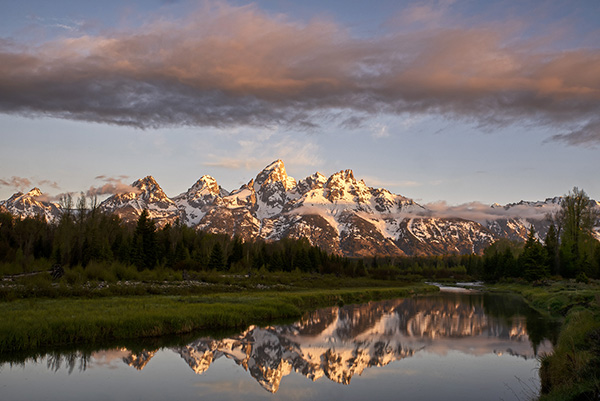
Schwabachers Landing: Tamron SP 24-70mm G2 – 35mm, 1/3 sec, f/22 @ ISO 64
Click image to view larger
When it comes to photography, Grand Teton National Park has some of the most scenic locations recognized the world over and photographed by the greatest photographers. From the first lights of dawn into the darkness of night, there are plenty of spots to stop get out your gear and capture it all.
For sunrise, one of the most popular locations in the park is Schwabachers Landing. The pull out for the parking lot to this spot is located about 5 miles north of the parks Moose, Wyoming main entrance. Used as a boat launch into the snake river, this area also has some of the most dramatic views of the Teton Range. A path leads you down to and along the winding Snake River to multiple areas to create incredible images. In the early morning hours the wind is very still so look for very still areas along the river, this will help you create beautiful reflections in the water. One piece of advice, if you are going during a busier time of year, I would get there early, as much as 2 hours before sunrise if you are looking to be at one of the “so called” prime spots about 1/4 mile down the path.
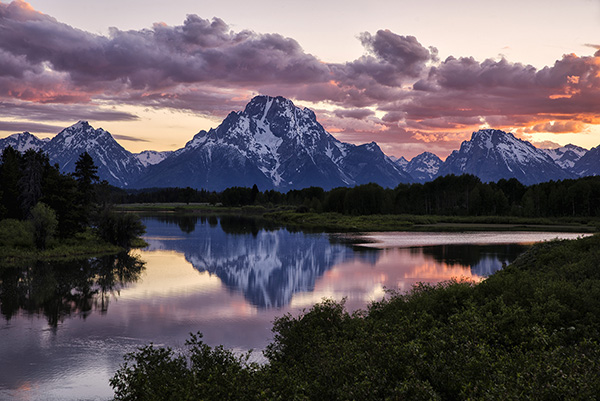
Oxbow Bend Sunset: Tamron SP 24-70mm G2 – 70mm, 1/10 sec, f/8 @ ISO 100
Click image to view larger
Further north into the park and just east of Jackson Lake you will come across Oxbow Bend pull out. This body of water is a channel off the main part of the snake River and is named for the oxbow shape the river takes. This area is one of the most popular spots to capture wildlife such as Moose, Osprey, Trumpeter Swans and Bald Eagles. Besides wildlife this is also one of the most iconic spots to capture a great landscape. Normally a sunrise spot, you can capture amazing reflections of Mount Moran in the calm early morning light. On certain days it can also be great for sunset. If the clouds cooperate and stick around as the sunset slowly sets behind the mountain, hopefully they burst into pinks, blues and oranges to light up the sky.
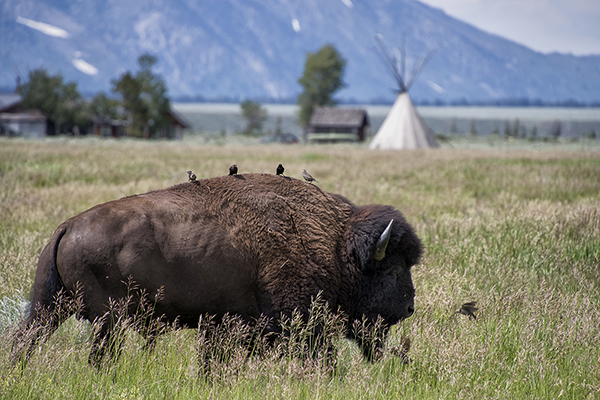
Grand Teton Bison: Tamron 18-400mm Di II– 270mm, 1/2000 sec, f/6.3 @ ISO 640
Click image to view larger
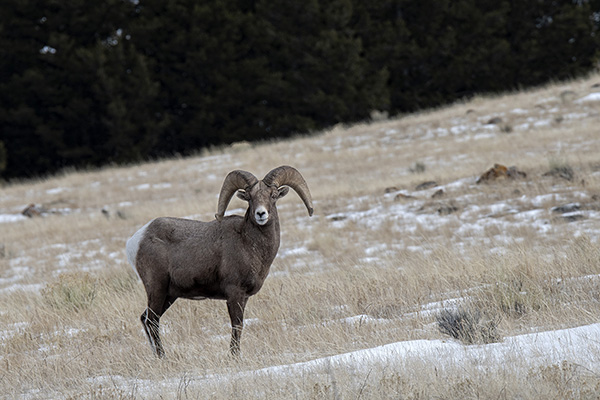
Long Horn Sheep: Tamron 100-400mm Di – 400mm, 1/160 sec, f/11 @ ISO 200
Click image to view larger
There are actually two things that capture the fascination of all visitors to Grand Teton National Park, First, the scenery, secondly, (but not really second) the wildlife. From birds of prey to long horn sheep to bison roaming, the valley is teaming with wildlife. All you will need to do is drive around a bit to see some sort of wildlife off in the distance. Bison will be roaming the fields all day long and you are sure to spot them every time you are driving about. If you are up for a little bit more of an adventure, head out just after sunrise or just before sunset to possibly spot a grizzly bear. Head to the northern end of the park and if you come across a “wildlife” car jam but can immediately spot the animal and there are long lenses and spotting scopes out, there is a good chance a grizzly has been spotted. Just mind your distance, no matter what the wildlife is. Remind yourself they are wild and unpredictable and you need to stay a safe distance at all times.
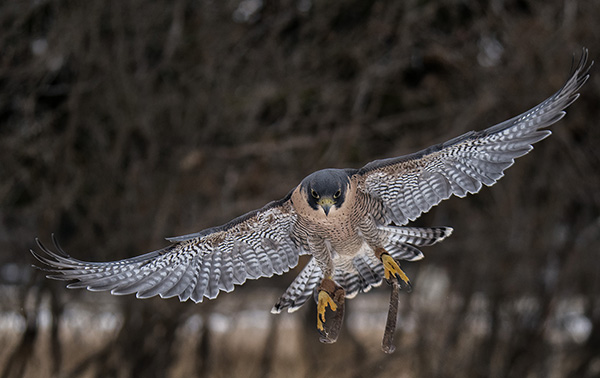
Peregrine Falcon: Tamron 100-400mm Di – 400mm, 1/160 sec, f/11 @ ISO 200
Click image to view larger
If you’re having a tough time finding birds of prey, or you just want to get up close to see some of these amazing birds, head over to the Teton Raptor Center (http://tetonraptorcenter.org) in Wilson, WY. Only a few minutes from downtown Jackson, this facility was opened in 1991 and cares for more than 130 injured birds a years. The Raptor center is open to the public, so please check out their schedule of events and pay them a visit.
Tamron Lenses used:
100-400mm Di VC USD
SP 24-70mm Di VC USD G2
18-400mm Di II VC HLD
More Photo Tips | Watch Videos | Learn More About Tamron Lenses | Photo Gallery